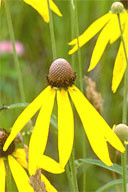 Loading... Please wait...
Loading... Please wait...- Home
- SEEDS
- SEED MIXES
- BUY PLANTS
- Info Request
-
Educational Videos
- Greenhouse Transplanting Demonstration
- Native Seed Cleaning demonstration at Ion Exchange Native Seed and Plant Nursery
- Attracting Butterflies
- Bidens - Bidens cernua Harvest Video
- Big Blue Stem Harvest
- Butterfly Milkweed Video
- Button Blazingstar - Liatris aspera Video
- Buttonbush - Cephalanthus occidentalis Video
- Canada Anemone - Anemone canadensis Harvest Video
- Cardinal Flower - Lobelia cardinalis Video
- Control Burn - Wildflower Field
- Cream Gentian - Gentiana flavida
- Culver's Root - Veronicastrum virginicum Video
- Cup Plant - Silphium perfoliatum Video
- Dormant Seeding | Planting
- Earthyman's Favorite Wildflowers Video
- Eco-Friendly Golf Course Seed Mix
- Floating Islands
- Fringed Loosestrife - Lysimachia ciliata Video
- Giant Yellow Hyssop - Agastache nepetoides Video
- Indiangrass - Sorghastrum nutans Video
- Iowa Prairie Partner Program
- Leadplant - Amorpha canescens (Potted) Video
- Meadow Blazingstar - Liatris ligulistylis
- Midland Shooting Stars - Dodecatheon meadii Video
- Native Plant Nursery Field Irrigation Experiment
- Nodding Onion - Allium cernuum Video
- Ohio spiderwort - Tradescantia ohiensis Video
- Old Man's Beard - Clematis virginiana blooms Video
- Oxeye Sunflower - Heliopsis helianthoides Video
- Prairie Spiderwort - Tradescantia bracteata
- Purple Coneflower - Echinacea purpurea Video
- Rain Garden or Water Garden Video
- Rattlesnake Master - Eryngium yuccifolium Video
- Riverbank Stabilization - Wetland Plants
- Rose Mallow - Hibiscus militaris Video
- Rosinweed - Silphium integrifolium Video
- Royal Catchfly - Silene regia
- Showy Tick Trefoil - Desmodium canadense Video
- Sneezeweed - Helenium autumnale Video
- Swamp Betony - Pedicularis lanceolata Video
- Swamp Milkweed - Asclepias incarnata Video
- Sweet Blackeyed Susan - Rudbeckia subtomentosa Video
- Tall Coreopsis - Coreopsis tripteris Video
- Urban Butterfly Garden
- Wild Bergamot - Monarda fistulosa Video
- Wild Geranium - Geranium maculatum Harvest
- Wild Goldenglow - Rudbeckia lanciniata Video
- Wild Petunia - Ruellia humilis Harvest Video
- Woodland Knotweed - Polygonum virginianum Video
- Yellow Coneflower - Ratibida pinnata Video
- Blog
- Resources
- Policies
Contact Us
Phone:
563-419-0837
or 563-535-7231
Email:
hbright@ionXchange.com
Browse Products
Add to Wish List
You Recently Viewed...
Our Newsletter
RATIBIDA PINNATA | Yellow Coneflower
Product Description
"Drooping Coneflower, Gray Coneflower, Prairie Coneflower (also applied to R. columnifera), Weary Susan, Grayheaded Coneflower"
Origin of the name Ratibida is not known. Pinnata comes from the Latin word meaning "featherlike
| Sun Exposure | Prairie, Savanna |
| Soil Moisture | Mesic, Dry Mesic |
| Bloom Time |
Summer, Fall July, August, September |
| Bloom Color | Yellow |
| Max Height | 5 feet |
| Wetland Code | UPL |
| Germ Code | C(30) |
| Seeds Per Ounce | 30,000 |
Found throughout the Tallgrass Prairie region and extensively elsewhere. Prefers dry areas, roadsides, along old railroad right-of-ways. Root system is a very stout, sturdy rhizome. One or several yellow flowers may top a single stem. Grows tall and erect to about 4 feet. Grows easily from seed and is often found as a sturdy and plentiful survivor on former prairies where nearly all of the original plants have disappeared.
Native Americans made a refreshing tea from the cones and leaves of yellow coneflower. The Meskwaki used the root as an ingredient to cure toothaches.
Edible Uses: Unknown
Medicinal Usse: Unknown
Herbal Uses: Unknown
Product Videos
-
 Yellow Coneflo...Earthyman views Yellow Coneflower (Ratibida pinnata) in full b...
Yellow Coneflo...Earthyman views Yellow Coneflower (Ratibida pinnata) in full b...

Product Reviews
-
Ratibida Pennata 7 Healthy rooted in soil plants in tiny pods of nifty tray.

Posted by Beverly Sutor on 17th Jun 2014
They have been in the ground for maybe a month of cool spring weather and have thrived but are this week just beginning to grow new leaves. I just love these ratibida pinnatas. They are so whimsical. Such a carefree feeling comes over you every time you see them. So glad I could find them.













